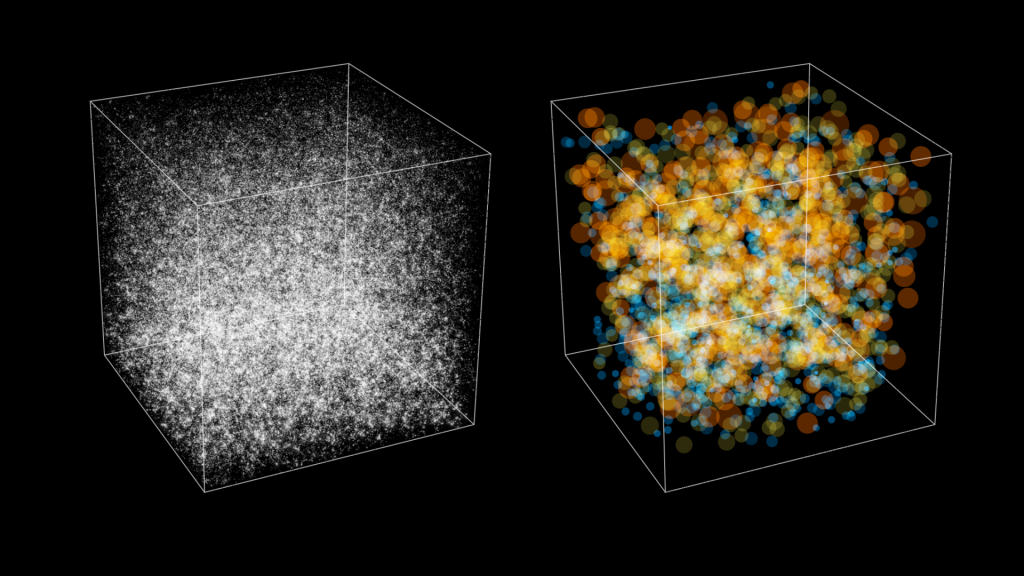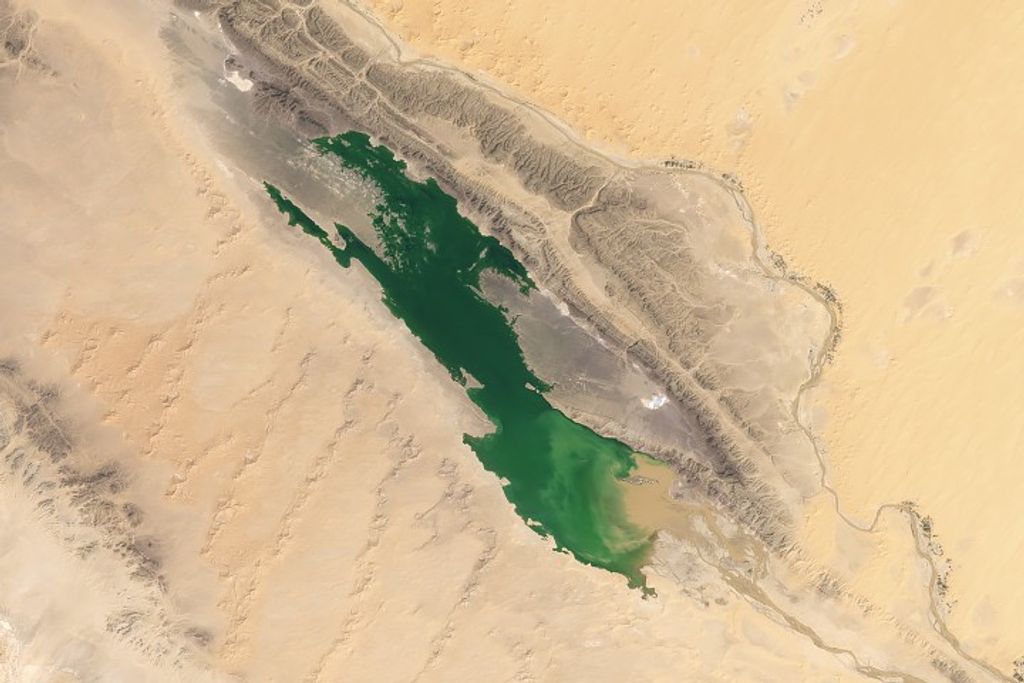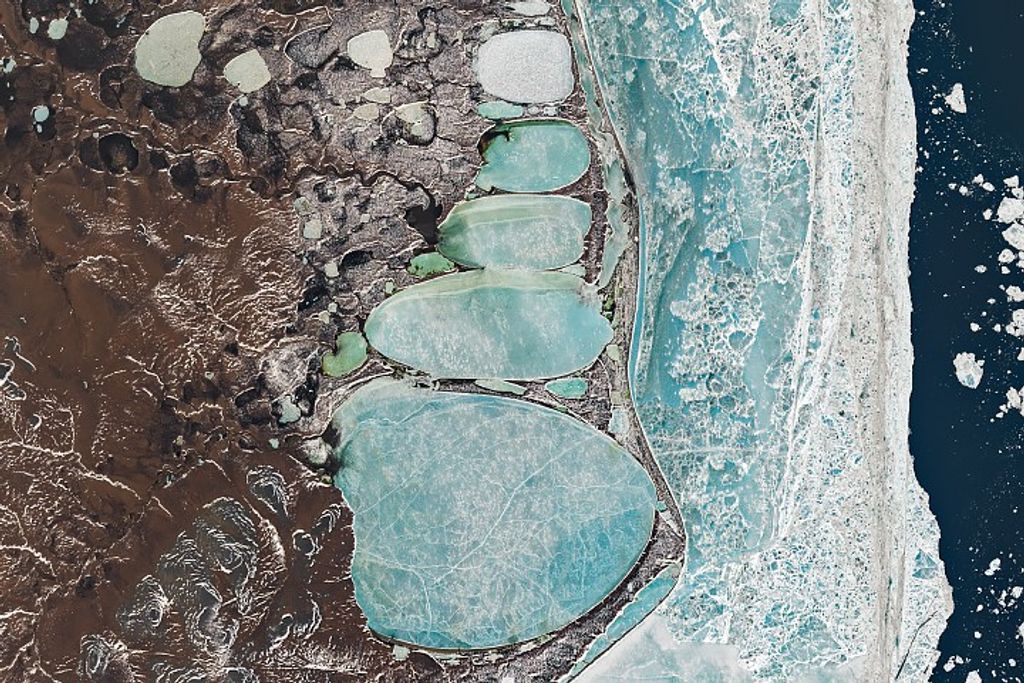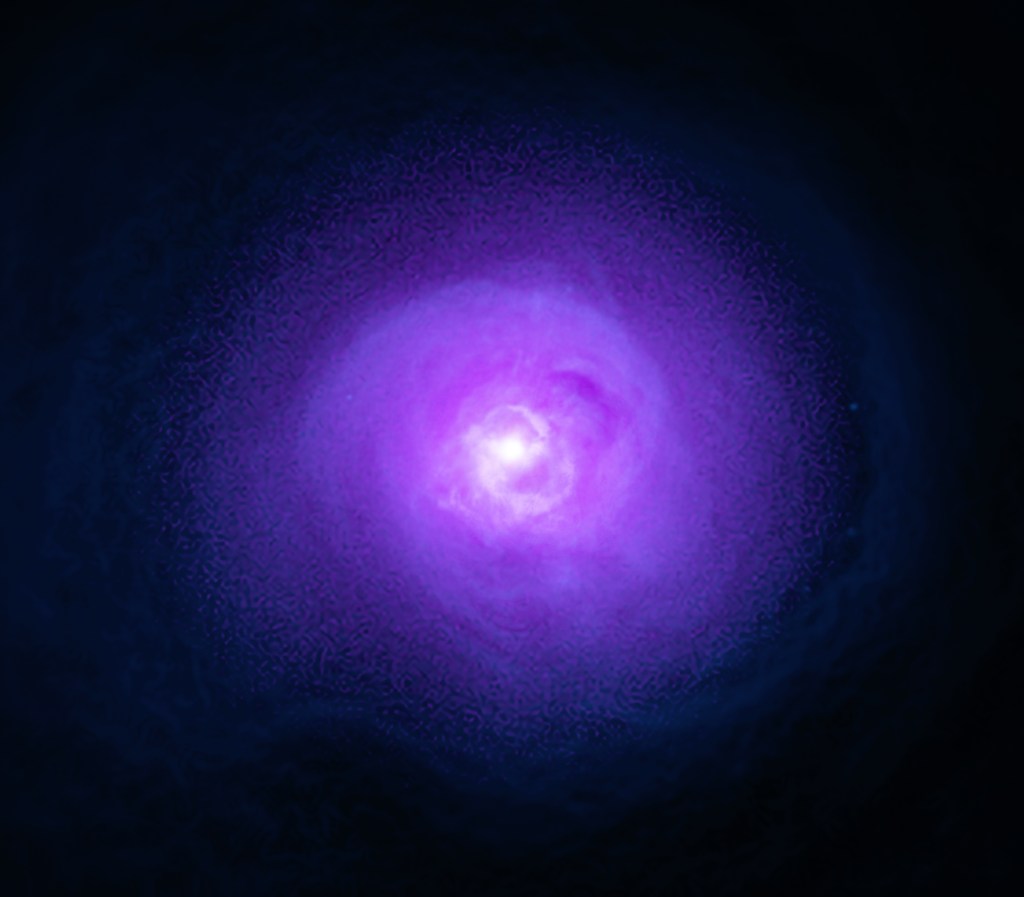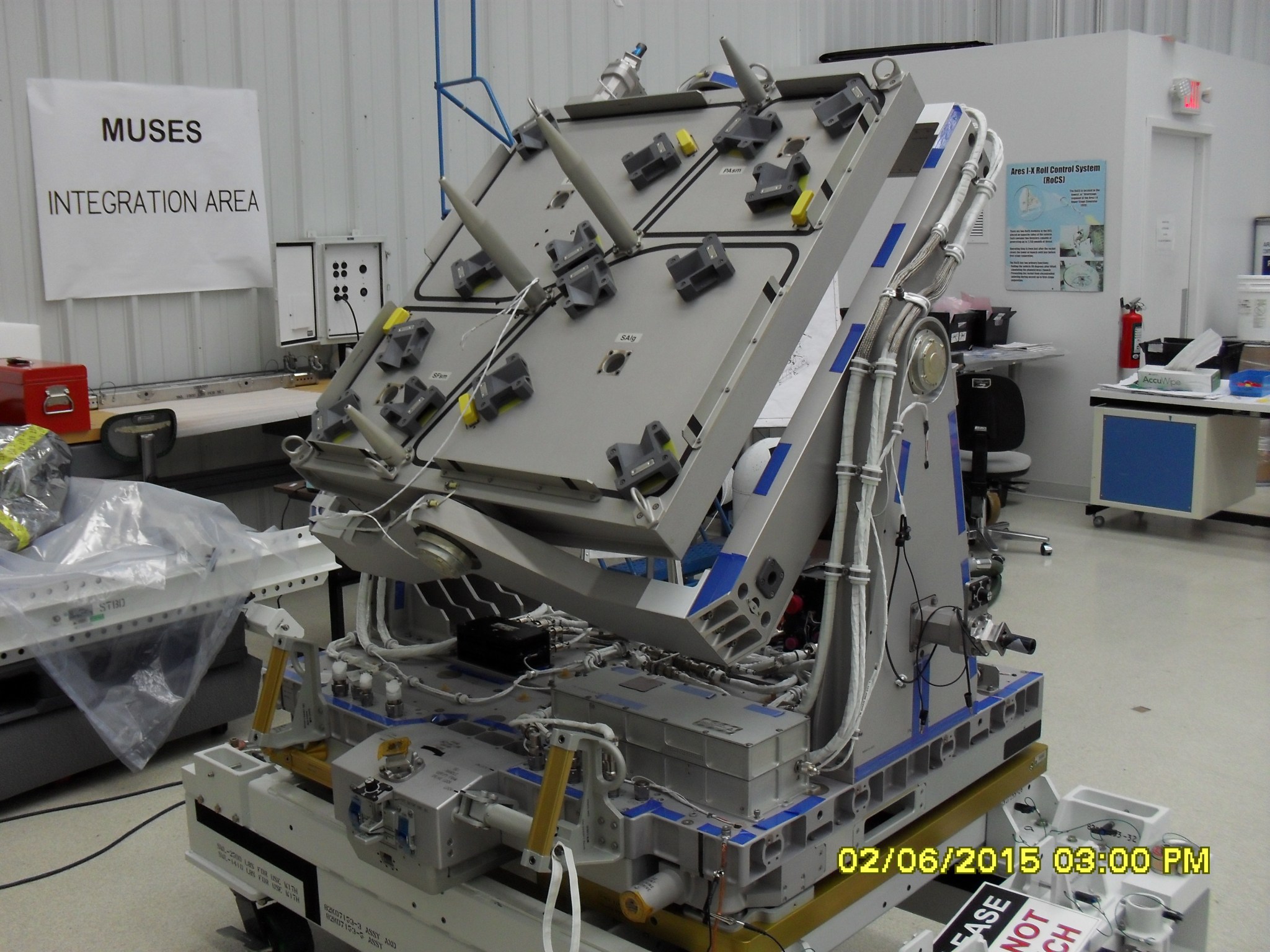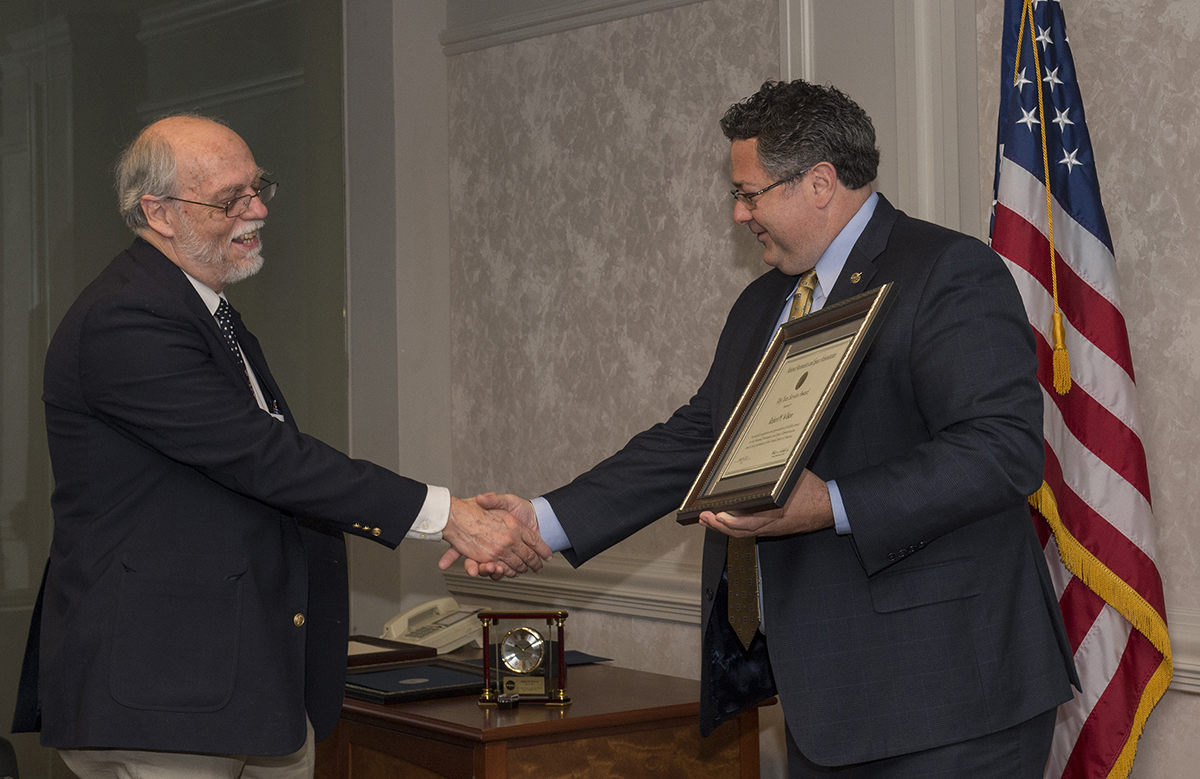In This Week’s Star
- SLS Test Hardware Loaded into NASA’s Super Guppy Aircraft
- Marshall Team Members Recognized at Annual Honor Awards
- Vice President Mike Pence Speaks at Kennedy Space Center
- MUSES Facility Enables Investigations for Future Users
- NASA Awards Citizen Inventors Top Prizes in Space Robotics Challenge
- Robert Wilson Reaches 50 Years of Service at Marshall
- This Week in NASA History: ECLSS Oxygen Generating System Becomes Operational on ISS — July 12, 2007
- 3D-Printed Habitat Challenge Highlighted on ‘This Week @NASA’
- Obituaries
SLS Test Hardware Loaded into NASA’s Super Guppy Aircraft
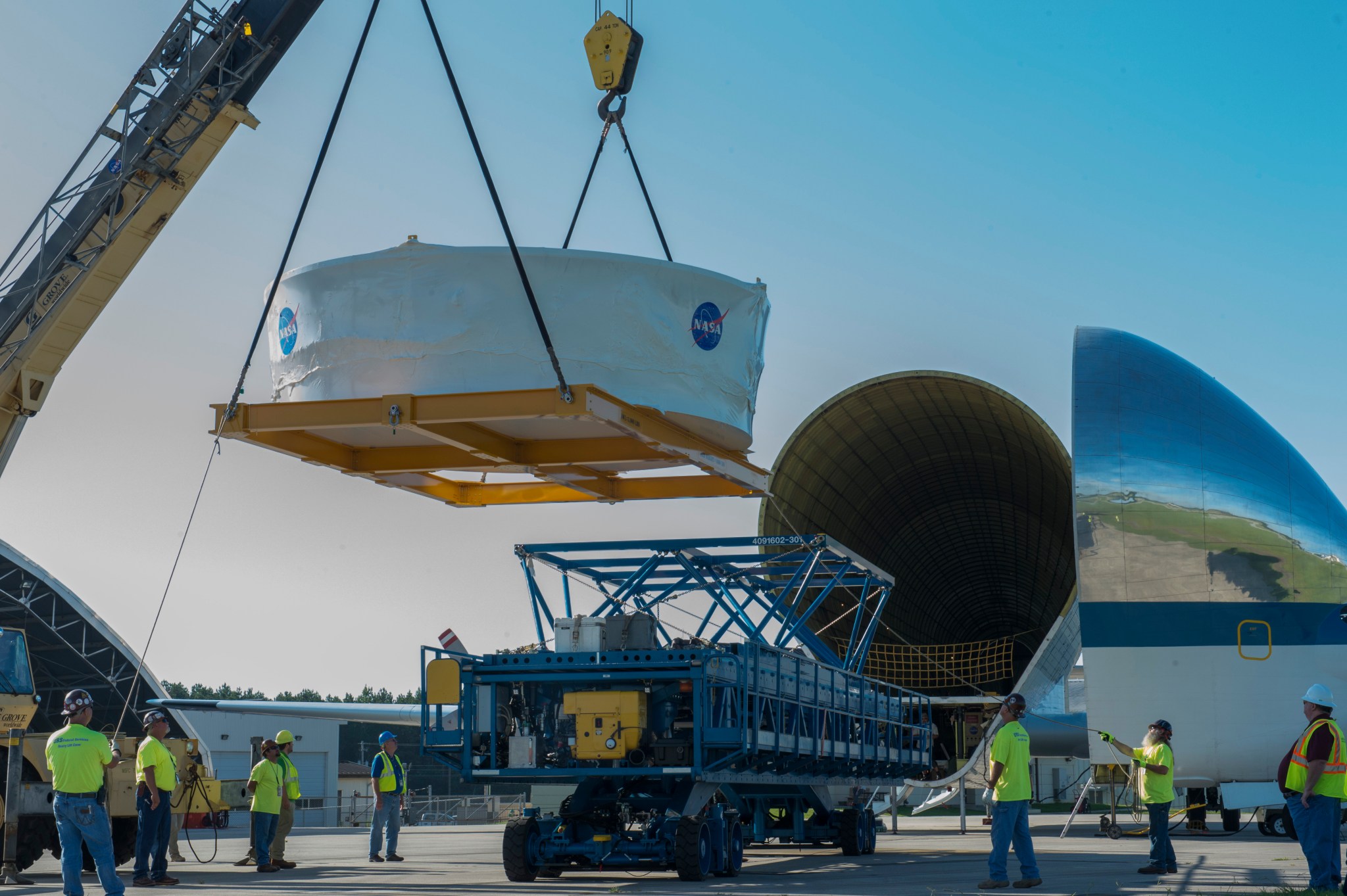
NASA engineers load a structural test version of the Orion Stage Adapter for NASA’s Space Launch System onto NASA’s Super Guppy Aircraft at the Redstone Arsenal Airfield for delivery to Lockheed Martin in Denver. The OSA connects NASA’s Orion spacecraft to the Interim Cryogenic Propulsion System, which will give the spacecraft its big, in-space boost to fly around the moon in its first integrated flight with SLS. Built at NASA’s Marshall Space Flight Center the OSA was used in integrated structural testing for the top of the SLS rocket and will be used in similar testing with Orion at Lockheed. The Guppy has a cargo compartment that is 25 feet tall, 25 feet wide and 111 feet long and can carry up to 24 tons. The aircraft has a unique hinged nose that can open 110 degrees, allowing large pieces of cargo to be loaded and unloaded from the front. (NASA/MSFC/Emmett Given)
Marshall Team Members Recognized at Annual Honor Awards
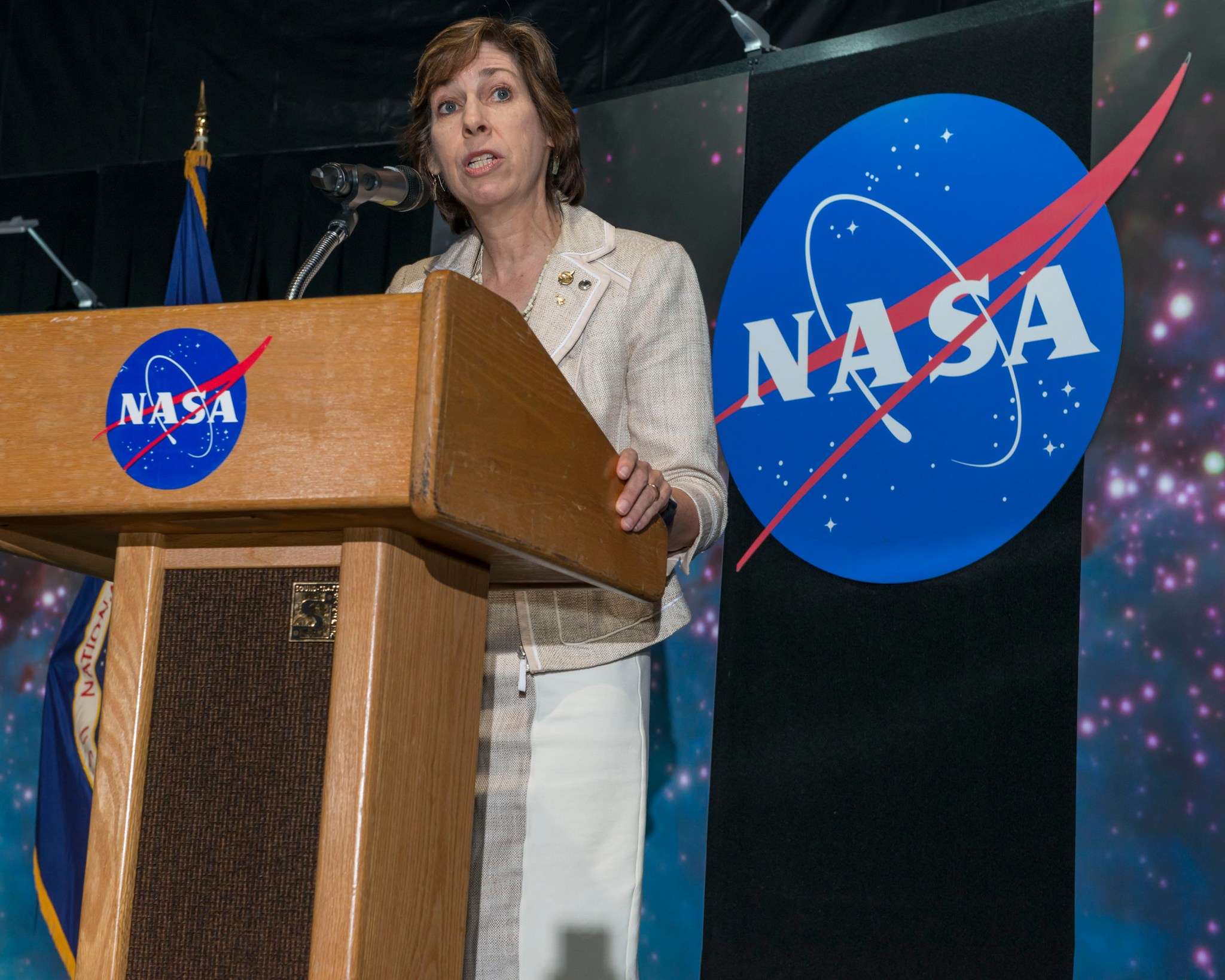
Ellen Ochoa, director of NASA’s Johnson Space Center, addresses honorees and their friends and families July 11 at the 2017 Honor Awards ceremony at NASA’s Marshall Space Flight Center. “In all of our work, we share the values that define NASA — excellence, teamwork, integrity and safety — in order to bring about mission success. With an always limited amount of resources, we need to make the most of the resources we have and people are our most important and precious resource,” said Ochoa. “I’ve realized more and more at each step in my career that our people are the most important factor in accomplishing our mission.” Ochoa and Marshall Center Director Todd May presented awards to more than 300 Marshall employees, contractors and teams. For more information about the 2017 Honor Awards, click here. (NASA/MSFC/Fred Deaton)
Vice President Mike Pence Speaks at Kennedy Space Center
Vice President Mike Pence thanked employees at NASA’s Kennedy Space Center for their commitment to America’s continued leadership in the space frontier during a visit to America’s multi-user spaceport July 6.
“Let us do what our nation has always done since its very founding and beyond — We’ve pushed the boundaries on frontiers, not just of territory, but of knowledge. We’ve blazed new trails, and we’ve astonished the world as we’ve boldly grasped our future without fear,” Pence said at the facility’s iconic Vehicle Assembly Building, where the new Space Launch System rocket and Orion spacecraft will be prepared ahead of launches to the moon, and eventually to Mars and beyond. “From this ‘Bridge to Space,’ our nation will return to the moon, and we will put American boots on the face of Mars.”
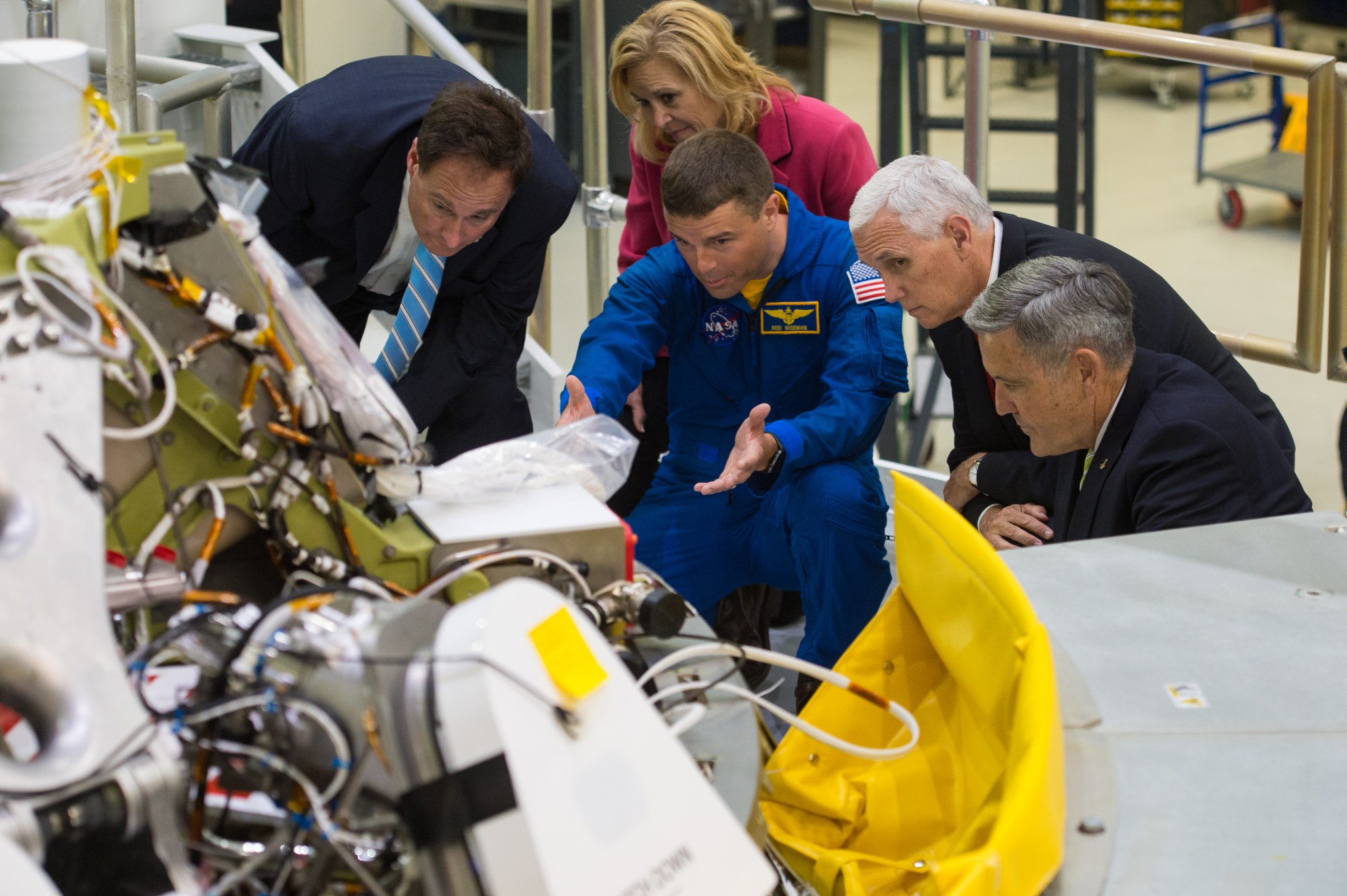
Acting NASA Administrator Robert Lightfoot thanked Pence and the administration for their strong support, and pointed out the evidence of government and industry cooperation on display at Kennedy.
“Here, of all places, we can see we’re not looking at an ‘and/or proposition’,” Lightfoot said. “We need government and commercial entities. We need large companies and small companies. We need international partners and our domestic suppliers. And we need academia to bring that innovation and excitement that they bring to the next workforce that we’re going to use to actually keep going farther into space than we ever have before.”
Pence also discussed President Donald Trump’s executive order signed on June 30, re-establishing the National Space Council to coordinate all aspects of the nation’s space power. Pence said the council will bring a renewed sense of purpose to America’s space policy by strengthening our economy and unlocking new opportunities, inspiring our children, enhancing our common defense and advancing the security of the American people.
The vice president also got a first-hand look at the public-private partnerships at Kennedy during a tour that showcased both NASA and commercial work that will soon lead to U.S.-based astronaut launches and eventual missions into deep space.
Pence visited the center’s Neil Armstrong Operations and Checkout Building, where the Orion spacecraft is being prepped for its first integrated flight with SLS in 2019. Orion has elements made in America by workers at more than 1,500 companies in 48 states, and some of that work, including components of Orion’s protective heat shield, were on display during the tour.
A driving tour showcased the mobile launch platform being readied for SLS flights as well as two commercial space facilities — Launch Complex 39A, the historic Apollo and space shuttle pad now leased by SpaceX and used for commercial launches; and Boeing’s facility, where engineers are prepping the company’s Starliner capsule for crew flights to the International Space Station in the same facility once used to do the same thing for space shuttles.
“We are in a great position here at Kennedy, we made our vision a reality; it couldn’t have been done without the passion and energy of our workforce,” said Kennedy Center Director Robert Cabana. “Kennedy is fully established as a multi-user spaceport supporting both government and commercial partners in the space industry. As America’s premier multi-user spaceport, Kennedy continues to make history as it evolves, launching to low-Earth orbit and beyond.”
MUSES Facility Enables Investigations for Future Users
A new investigation deployed on the International Space Station has Huntsville roots and may inspire new methods of viewing our home planet.
The Multiple User System for Earth Sensing Facility, designed and built by Teledyne Brown Engineering in Huntsville, will enable numerous branches of research and science through its ability to support many different kinds of investigations and hardware in orbit. Providing a platform for payloads such as high-resolution digital cameras and hyperspectral imagers, MUSES provides precision for various kinds of research and science.
Orbiting approximately 250 miles above Earth, the MUSES platform offers researchers a unique vantage point from the outside of the station for tasks like Earth observation, disaster response, maritime domain awareness, agricultural/land use applications, food security, air quality, oil and gas exploration, mining, atmospheric investigations and fire detection.
“The space station’s path is ideal for Earth science,” said Paul Galloway, the project’s manager and lead systems engineer with Teledyne Brown. “The repeated exposure to the Earth’s land masses gives you a good revisit time for target areas. MUSES’ ability to point and track ground targets also enhances the revisit opportunities and viewing angles.”
The space station’s orbit covers 90 percent of Earth’s inhabited surfaces and allows for both day and nighttime passes, allowing a variety of observation and data collection times.
MUSES will provide Earth imagery data to NASA’s SERVIR team at the Marshall Space Flight Center, providing disaster response information to aid in the team’s humanitarian missions, which will improve environmental decision-making among developing nations. The MUSES payload data can be used in response to disasters world-wide.
“Our project provides Earth monitoring data to more than 40 countries around the world,” said Dan Irwin, creator and manager of NASA’s SERVIR Science Coordination Office at Marshall. “The information helps governments manage natural resources, evaluate ecological threats and rapidly respond to or assess damage from natural disasters. The MUSES platform may help us improve the data we pass along to our international partners and help them make decisions to benefit their citizens.”
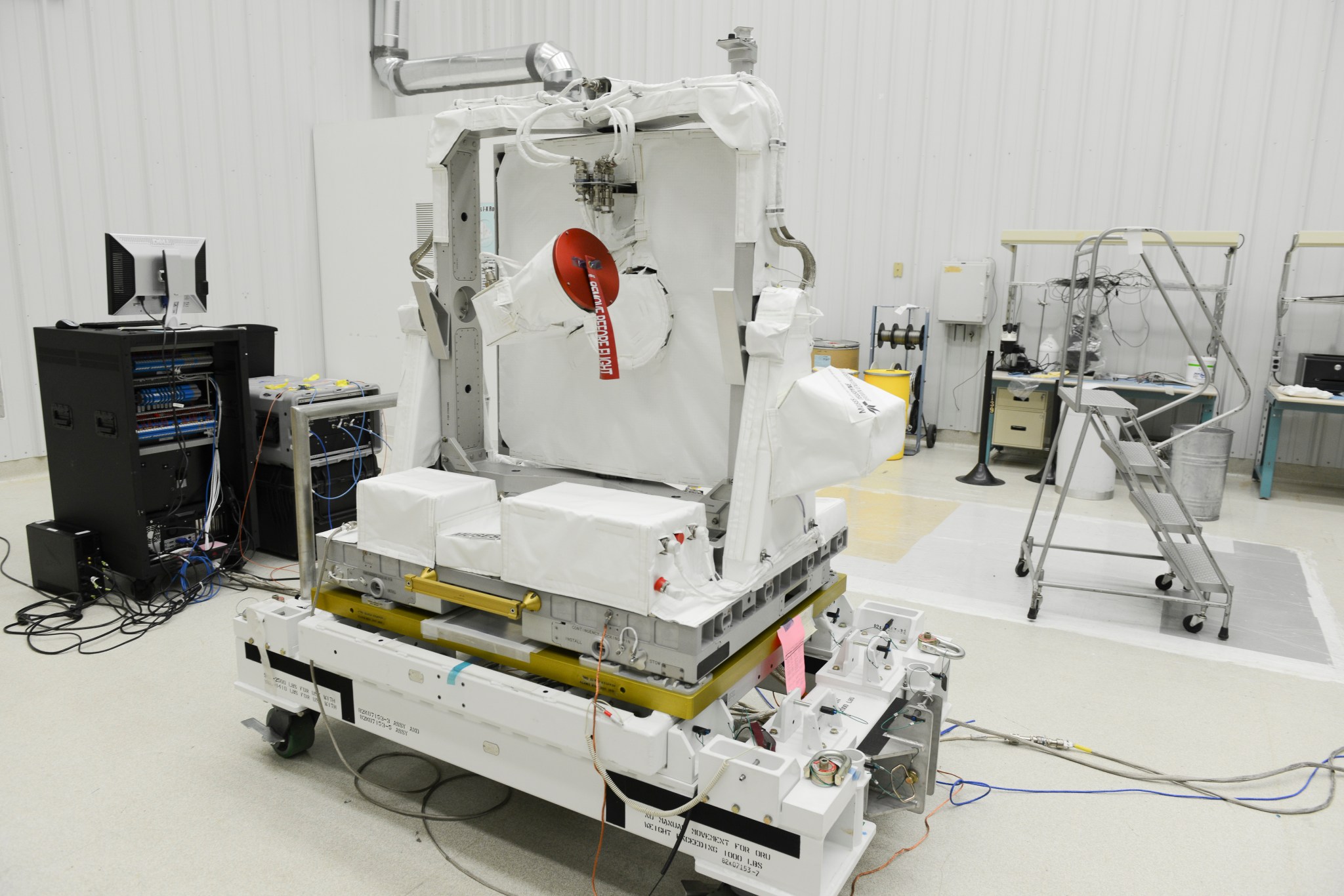
Instruments flying aboard the platform will be able to detect phenomenon like flooding, coastal erosion, water pollution, red tide and landslides. Space-based imagery is one of many tools used in the disaster response decision-making process.
The MUSES platform is a U.S. National Laboratory-sponsored pointing system and can accommodate up to four instruments at a time. Each instrument can be installed and removed robotically. These payloads can be operated simultaneously, triggering a system that can communicate with all the systems aboard the space station and store and transmit large amounts of data back to the ground. The system will be operated from the Teledyne Operations Center in Huntsville.
Developed in a cooperative agreement between Teledyne Brown and NASA, MUSES will provide many commercial companies the opportunity to conduct their science and research in space. It provides low-cost access to space for instrument developers. The ability to return payloads from the space station to Earth provides an excellent platform for technology demonstration and the space qualification of hardware.
The first investigation to be hosted aboard the MUSES platform will be the DLR Earth Sensing Imaging Spectrometer, planned for launch later this year. DESIS is a hyperspectral imager operating in the 400-1000 nanometer spectral range. The German Space Agency will use the DESIS imagery for scientific purposes while Teledyne Brown will use the imagery for commercial purposes.
“MUSES was designed to interface with every possible data network on the space station and take maximum utilization of the downlink capability to achieve our goal of getting large amounts of image and scientific data down from these instruments,” said Galloway.
NASA Awards Citizen Inventors Top Prizes in Space Robotics Challenge
By Janet Sudnik
NASA has awarded $300,000 to four teams of citizen inventors at the Space Robotics Challenge. The teams developed software to improve the autonomous capabilities of NASA’s humanoid R5 robot, enabling it to perform specific tasks that may aid future astronauts during space travel or after landing on other planets.
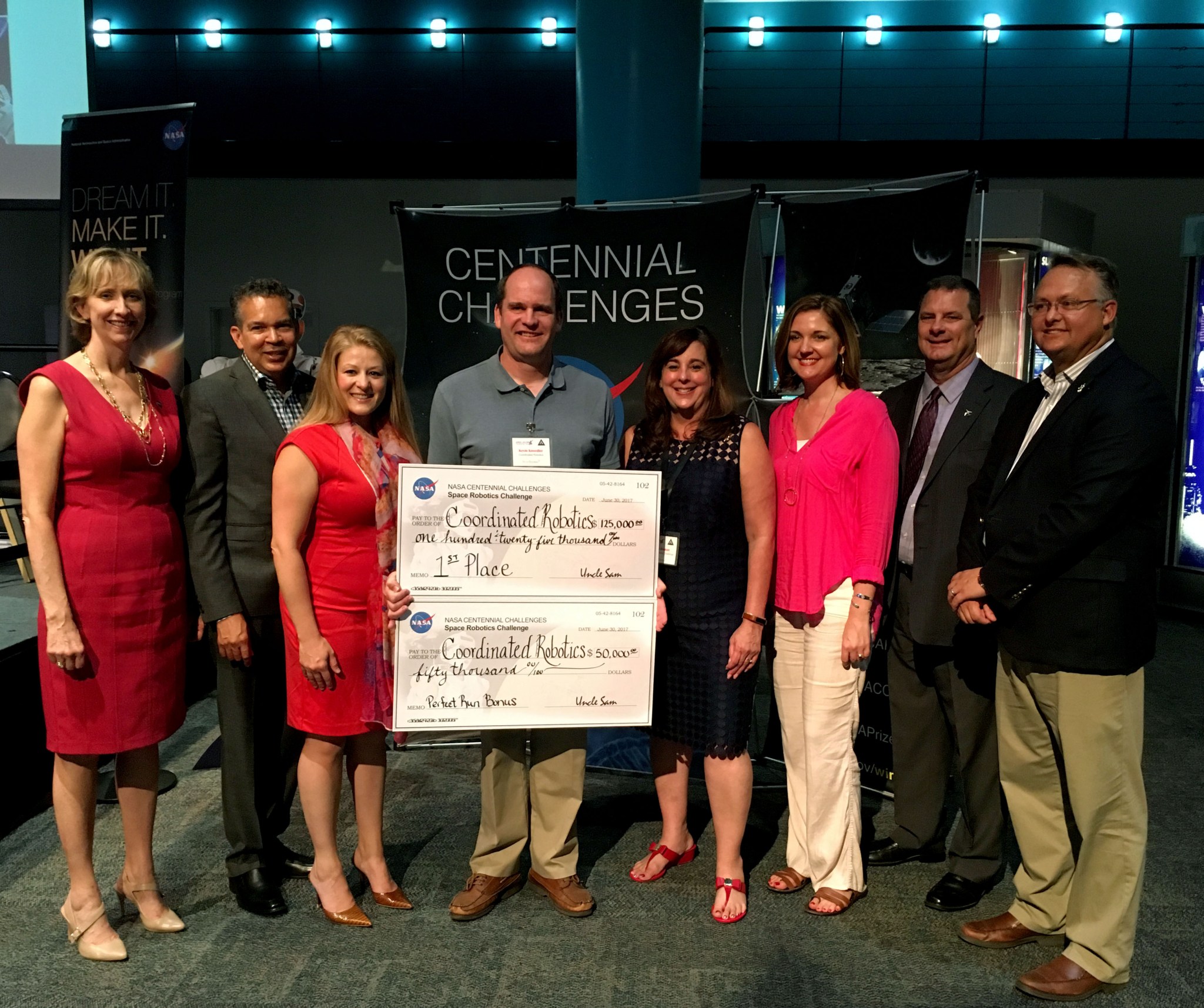
The winning teams are:
First place: $125,000: Coordinated Robotics of Newbury Park, California (Coordinated Robotics is also receiving a $50,000 bonus award for accomplishing a perfect run where they completed all of the tasks.)
Second place: $100,000: Walk Softly of Niskayuna, New York
Third place: Team Olympus Mons of Barcelona, Spain (International teams can win honors, but are not eligible for prize money)
Fourth place: $25,000: ZARJ of St. Paul, Minnesota
“We are impressed with the terrifically innovative solutions these teams have delivered,” said Therese Griebel, deputy associate administrator for programs in NASA’s Space Technology Mission Directorate. “Our next generation of space explorers will be going farther than ever before, and advanced robotics systems will play a significant role in the journey. Robots will be living and working in space alongside our astronauts, and technology innovations like these are crucial to making that possible.”
The Space Robotics Challenge is part of NASA’s Centennial Challenges program, which uses prize competitions to advance technology and engage a diverse group of citizen solvers. NASA uses competitions to draw citizen inventors from diverse backgrounds and disciplines to push technology forward for the benefit of space exploration. The Centennial Challenges Program, managed at NASA’s Marshall Space Flight Center, is part of the agency’s Space Technology Mission Directorate.
The challenge was announced in August 2016, and more than 400 teams from 55 countries pre-registered. Ninety-two teams from 13 countries competed in the qualification round. The Top 20 advanced to the finals and received $15,000 each. A prize purse of $600,000 was available for the final round of competition.
The competition was held in a virtual environment where each team’s R5 had to resolve the aftermath of a dust storm that damaged a Martian habitat. The robots had to tackle three objectives — aligning a communications dish, repairing a solar array and fixing a habitat leak. The simulation included periods of latency to represent the communications delay from Earth to Mars.
“The rigorous science learning in this international competition helped programmers develop software for humanoid robots who will someday assist astronauts exploring deep space in future missions,” said Daniel Newmyer, vice president of education at Space Center Houston, the official visitor center of NASA’s Johnson Space Center. “Participants worked together to solve real-world problems, transform lives and inspire others through the wonder of space exploration.”
The vision of the challenge is that one day, robots could be a part of precursor missions to selected landing sites, arriving ahead of astronauts to set up habitats, life support systems, and even begin preliminary scientific research.
The competition was run by NASA, in partnership with Space Center Houston and NineSigma of Cleveland, Ohio, a global innovation consultant organization.
“The required tasks represented a significant challenge to competitors, and the participating teams truly rose to the occasion,” said NineSigma CEO Dr. Andy Zynga. “We were extremely pleased with the high level of talent demonstrated by all teams involved, and we are confident that this program will help NASA move closer to achieving its goals.”
Sudnik, an ASRC Federal/Analytical Services employee, supports the Office of Strategic Analysis & Communications.
Robert Wilson Reaches 50 Years of Service at Marshall
By Will Bryan
Awards hang on the office walls of NASA Marshall Space Flight Center scientist Robert Wilson, and pictures of his loved ones look down on him from atop a book case.
Wilson, based at the National Space Science and Technology Center, was recently awarded the Career Service Recognition Award at Marshall’s Executive Forum for his 50 years of service to the center.
Wilson’s time with America’s space program began as a cooperative education student in 1967 working in the Research Projects Office, which became the Space Sciences Laboratory and later the NSSTC.
“It was a great opportunity,” Wilson said. “They needed someone with an astronomy background, and it was fun because I actually got to be hands-on with a telescope, doing what I love.”
A Tampa, Florida, native and astronomy major at the University of South Florida, Wilson studied binary stars and Cepheid variable stars over the course of his four co-op sessions. In June 1969, he became a full-time research scientist at Marshall, initially studying X-ray reflectometry.
“With our X-ray reflectometry work, we bounced X-ray beams off mirror flats to determine characteristics of different materials,” he said. “It was some really interesting science, and I was proud to be part of it.”
Wilson’s X-ray work continued on his next project — Skylab. When America’s first space station launched, Wilson was among the many Marshall team members who had work onboard. He was part of the group that operated and analyzed the data from the S-056 experiment that viewed the sun in X-rays.
“My work with Skylab was really a lot of fun,” Wilson said. “The team got to go to Houston for the actual mission, monitoring the sun’s activity and planning observations that the astronauts would conduct. The ‘front-row seat’ made for a very memorable experience.”
The following four decades Wilson worked on various programs, including Spacelab 2, where he was part of the Science Mission team and served as the executive secretary of the Investigator Working Group. He also began studying the solar cycle with now-retired NASA scientist David Hathaway and participating with the Hubble Space Telescope team.
“With Hubble, I was involved with the solar cycle prediction for when we should launch,” he said. Earth’s atmosphere expands when the sun’s activity is at its maximum, which can cause satellites to decay. After looking at data, it was determined that it was safe for Hubble to launch.
His work with Hubble earned him NASA’s Silver Snoopy Award, awarded to him by astronaut Jan Davis.
Wilson’s studies on the solar cycle continue today, in addition to his studies of space weather, climate change and tropical cyclones. And although he may not travel as much as he did in the early days, he continues to work with passion and enthusiasm, and he doesn’t see that ending anytime soon.
“I’m not ready to retire, just yet,” he said. “I enjoy what I do, and as long as I’m contributing, I’m going to keep on going.”
Bryan, an ASRC Federal/Analytical Services employee, supports the Office of Strategic Analysis & Communications.
This Week in NASA History: ECLSS Oxygen Generating System Becomes Operational on ISS — July 12, 2007
This week in 2007, the Oxygen Generation System, aboard the International Space Station, became operational. Part of the Environmental Control and Life Support System, the OGS produces breathable air for the station’s crew as well as replaces oxygen lost as a result of experiment use, module leakage, carbon dioxide venting and airlock depressurization. Here, the three-module ECLSS is pictured at the Internal Thermal Control System Test Facility at NASA’s Marshall Space Flight Center. Marshall is responsible for the design, construction and testing of regenerative life support hardware for the space station and Marshall’s Payload Operations Integration Center serves as “science central” for the station, working 24/7, 365 days a year in support of the orbiting laboratory’s scientific experiments. The NASA History Program is responsible for generating, disseminating, and preserving NASA’s remarkable history and providing a comprehensive understanding of the institutional, cultural, social, political, economic, technological and scientific aspects of NASA’s activities in aeronautics and space. For more pictures like this one and to connect to NASA’s history, visit the Marshall History Program’s webpage. (NASA)
3D-Printed Habitat Challenge Highlighted on ‘This Week @NASA’
Winners of the most recent milestone in the 3D-Printed Habitat Challenge are featured in the latest edition of “This Week @NASA,” a weekly video program broadcast nationwide on NASA-TV and posted online.
More than $200,000 has been awarded to teams of citizen inventors that completed the latest milestone in the Centennial Challenges Program’s 3D-Printed Habitat Challenge — a joint partnership with Bradley University and several corporate sponsors. The challenge seeks to advance the construction technology needed to 3-D print sustainable housing solutions for Earth and beyond, using recyclables and simulated Martian soil.
The Centennial Challenges Program — managed at Marshall Space Flight Center — is part of the Space Technology Mission Directorate at NASA Headquarters.
View this and previous episodes at “This Week @NASA” on NASA’s YouTube page.
Obituaries
Charles E. Houston, 83, of Huntsville, died July 5. He retired from the Marshall Center in 1999 as an information services department manager. He is survived by his wife, Mary Anna Allison-Houston.



